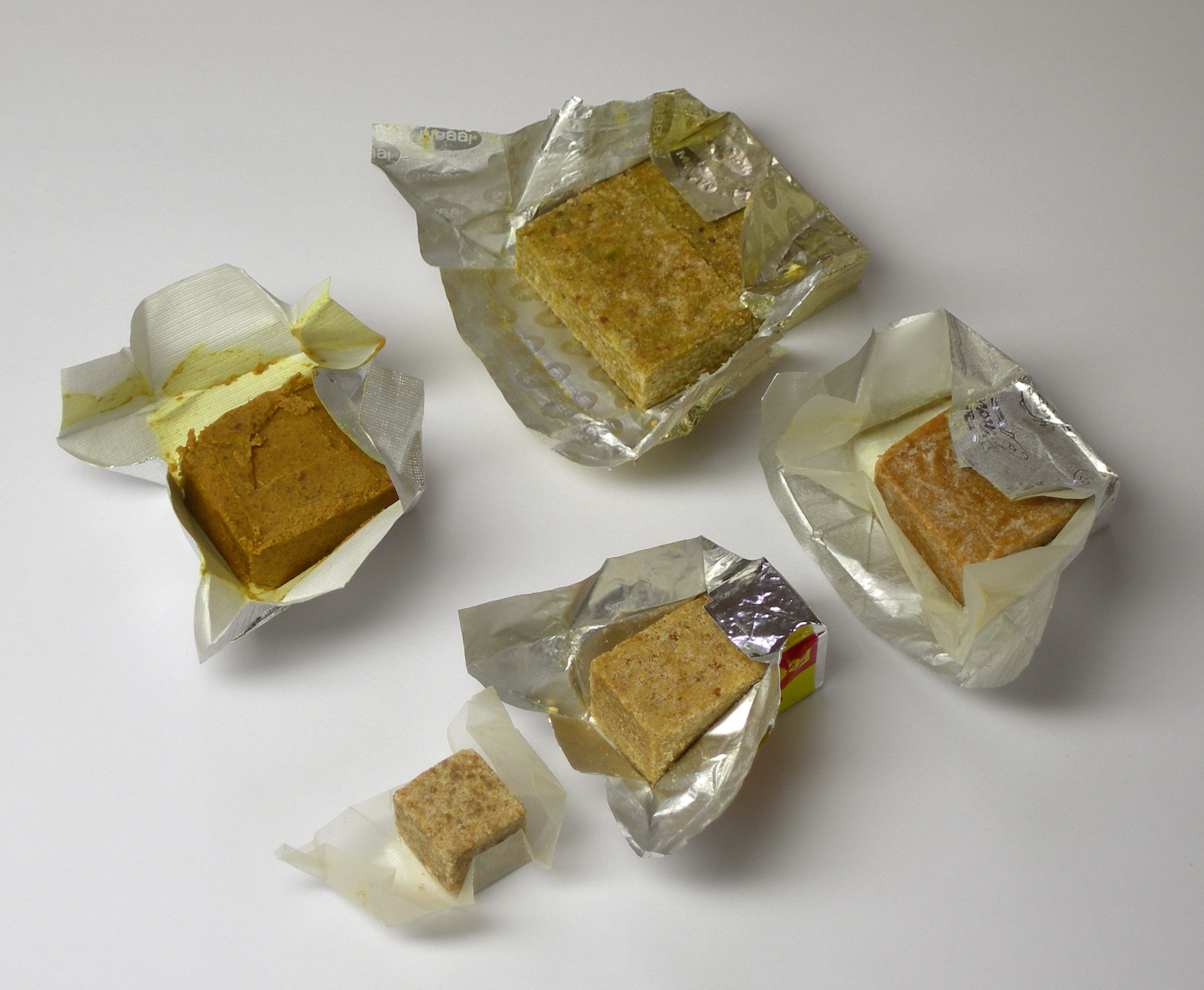Meat Extract on:
[Wikipedia]
[Google]
[Amazon]
 Meat extract is highly concentrated meat stock, usually made from
Meat extract is highly concentrated meat stock, usually made from
Die Geschichte von Liebigs Fleischextrakt: Zur populärsten Erfindung des berühmten Chemikers
(The History of Liebig's Meat Extract: On the famous chemist's most popular invention), ''Spiegel der Forschung: Wissenschaftsmagazin der Justus-Liebig-Universität Gießen'' 20:1/2:6, October 2003. {{Beef Food ingredients Dried meat Beef Umami enhancers German inventions Justus von Liebig
 Meat extract is highly concentrated meat stock, usually made from
Meat extract is highly concentrated meat stock, usually made from beef
Beef is the culinary name for meat from cattle (''Bos taurus'').
In prehistoric times, humankind hunted aurochs and later domesticated them. Since that time, numerous breeds of cattle have been bred specifically for the quality or quant ...
or chicken
The chicken (''Gallus gallus domesticus'') is a domestication, domesticated junglefowl species, with attributes of wild species such as the grey junglefowl, grey and the Ceylon junglefowl that are originally from Southeastern Asia. Rooster ...
. It is used to add meat flavour in cooking, and to make broth for soups and other liquid-based foods.
Meat extract was invented by Baron Justus von Liebig, a German 19th-century organic chemist. Liebig specialised in chemistry and the classification of food and wrote a paper on how the nutritional value of a meat is lost by boiling. Liebig's view was that meat juices, as well as the fibres, contained much important nutritional value and that these were lost by boiling or cooking in unenclosed vessels. Fuelled by a desire to help feed the undernourished, in 1840 he developed a concentrated beef extract, ''Extractum carnis Liebig'', to provide a nutritious meat substitute for those unable to afford the real thing. However, it took 30 kg of meat to produce 1 kg of extract, making the extract too expensive.
Commercialisation
Liebig's Extract of Meat Company
Liebig went on to co-found the Liebig's Extract of Meat Company, (later Oxo), inLondon
London is the capital and List of urban areas in the United Kingdom, largest city of England and the United Kingdom, with a population of just under 9 million. It stands on the River Thames in south-east England at the head of a estuary dow ...
whose factory, opened in 1865 in Fray Bentos, a port in Uruguay
Uruguay (; ), officially the Oriental Republic of Uruguay ( es, República Oriental del Uruguay), is a country in South America. It shares borders with Argentina to its west and southwest and Brazil to its north and northeast; while bordering ...
, took advantage of meat from cattle being raised for their hides — at one third the price of British meat. Before that, it was the Giebert et Compagnie (April 1863).
Bovril
In the 1870s, John Lawson Johnston invented 'Johnston's Fluid Beef', later renamed Bovril. Unlike Liebig's meat extract, Bovril also contained flavourings. It was manufactured inArgentina
Argentina (), officially the Argentine Republic ( es, link=no, República Argentina), is a country in the southern half of South America. Argentina covers an area of , making it the second-largest country in South America after Brazil, t ...
and Uruguay
Uruguay (; ), officially the Oriental Republic of Uruguay ( es, República Oriental del Uruguay), is a country in South America. It shares borders with Argentina to its west and southwest and Brazil to its north and northeast; while bordering ...
which could provide cheap cattle.
Effects
Liebig and Bovril were important contributors to the beef industry inSouth America
South America is a continent entirely in the Western Hemisphere and mostly in the Southern Hemisphere, with a relatively small portion in the Northern Hemisphere at the northern tip of the continent. It can also be described as the souther ...
.
Bonox
On the market in 1919 and created by theFred Walker and Company
Fred may refer to:
People
* Fred (name), including a list of people and characters with the name
Mononym
* Fred (cartoonist) (1931–2013), pen name of Fred Othon Aristidès, French
* Fred (footballer, born 1949) (1949–2022), Frederico Rodr ...
Bonox is manufactured in Australia. When it was created it was often offered as an alternative hot drink with it being common to offer "Coffee, tea or Bonox".
Today
Meat extracts have largely been supplanted by bouillon cubes and yeast extract. Some brands of meat extract, such as Oxo and Bovril, now contain yeast extract as well as meat extract. For example, the current formulation of Bovril contains 41% beef stock, 24% yeast extract, 1% dehydrated beef and salt (388 mgsodium
Sodium is a chemical element with the symbol Na (from Latin ''natrium'') and atomic number 11. It is a soft, silvery-white, highly reactive metal. Sodium is an alkali metal, being in group 1 of the periodic table. Its only stable ...
per 100g), spice extracts and flavor enhancers among other ingredients. High purity meat extract is still available from laboratory supply companies for microbiology.http://www.sigmaaldrich.com/catalog/product/sial/70164
See also
* List of dried foods * Culinary arts * Portable soupReferences
Bibliography
* Günther Klaus Judel,Die Geschichte von Liebigs Fleischextrakt: Zur populärsten Erfindung des berühmten Chemikers
(The History of Liebig's Meat Extract: On the famous chemist's most popular invention), ''Spiegel der Forschung: Wissenschaftsmagazin der Justus-Liebig-Universität Gießen'' 20:1/2:6, October 2003. {{Beef Food ingredients Dried meat Beef Umami enhancers German inventions Justus von Liebig